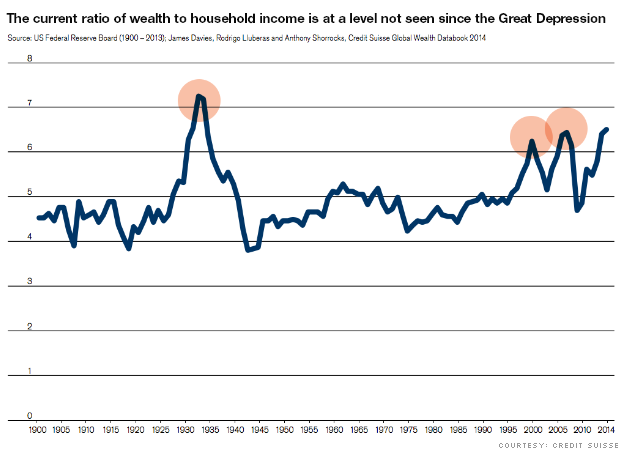Comments due by Dec 3, 2014
This is a must read about the Fed . It does deal with many of the issues that we spoke about during our last class session.
***************************************************************************
WASHINGTON, DC – The US Federal Reserve System is the world’s most important central bank. Its decisions about interest rates and financial regulation reverberate through global markets and affect millions of lives. Yet its governance structure is of another age – antiquated, increasingly problematic, and urgently in need of sensible reform.
The Fed made major mistakes in the run-up to the global economic crisis of 2007-08, most notably by adopting a lax approach to the supervision of key financial institutions, and by allowing some very large banks to become extremely fragile. In one of the great ironies of modern American politics, the post-crisis Dodd-Frank financial reforms of 2010 actually gave more power to the Fed, mostly because other US regulatory agencies were regarded as having done a worse job.
In view of the Fed’s decidedly mixed track record since the Dodd-Frank reforms, some officials evidently regarded that default by Congress as a mandate to conduct business as usual. Recent press reports have highlighted lapses in supervision, particularly in and around the Federal Reserve Bank of New York – one of 12 regional banks in the Fed System, which also has a Board of Governors in Washington, DC.
This regional structure is the result of legislative compromise in 1913, when the Fed was created, and again in the mid-1930s, when its governance was last overhauled. Whereas members of the Fed’s Washington-based Board of Governors are nominated by the US president, subject to Senate confirmation, the presidents of the regional Federal Reserve banks are appointed by local boards.
In reality, the New York Fed has always had disproportionate sway; not all regional Fed presidents are created equal. The president of the New York Fed is a permanent voting member and vice chairman of the Federal Open Market Committee, which sets interest rates, whereas other regional Fed presidents are voting members only on a rotating basis.
The New York Fed also has a particularly important role in bank supervision – most of America’s “too big to fail” banks are located in its jurisdiction (and most global banks have a presence there). And the New York Fed has long been the Fed System’s eyes and ears on Wall Street.
Or perhaps it has become the other way around. At least over the past decade, senior New York Fed officials have consistently sided with the interests of very large banks. (To be clear, I also know many Fed officials who are outstanding public servants). Though Wall Street interests have long been well represented on the board of the New York Fed, under Timothy Geithner, its president from 2003 to 2009, the big players became even more powerful – with some rather unfortunate consequences for the rest of us.
In his recent memoir, Stress Test, Geithner says, “I basically restored the New York Fed board to its historic roots as an elite roster of the local financial establishment.” His choices included Dick Fuld, CEO of Lehman Brothers, which failed spectacularly in September 2008, and Stephen Friedman, a Goldman Sachs board member, who resigned as chair of the New York Fed’s board after being accused of inappropriately trading Goldman stock during the financial crisis. Geithner also established a tangled web of connections between the New York Fed and JPMorgan Chase, some of which linger to this day.
Some senior Fed officials become angry when pressed about this reality. But the Fed’s legitimacy – and its ability to make sensible policy – is not boosted by having major banks represented, directly or indirectly, on a board that chooses and oversees a key policymaker.
Now, finally, US politicians on both the left and the right are focusing their attention on a long-overdue reform of the Fed’s governance. One important proposal comes from Senator Jack Reed, a Democrat from Rhode Island, who proposes, quite reasonably, that the president of the New York Fed should be nominated by the president and confirmed by the Senate, just like members of the Board of Governors – or any other important economic policymaker. The president of the New York Fed would also be required to testify before Congress on a regular basis.
The Fed’s defenders will respond that it would be dangerous to alter the status quo. But it is the Fed’s current governance that has become dangerous. Senators Elizabeth Warren of Massachusetts and Joe Manchin of West Virginia argue, entirely convincingly, that the composition of the Fed’s Board of Governors should be tilted away from people who are connected with big Wall Street firms.
Meanwhile, House Republicans are preparing their own Fed governance reforms, which would be even more radical – and would likely constrain monetary policy unwisely.
In any case, it is time for change at the Fed. And, as is often the case with finance, the place to start is New York.








